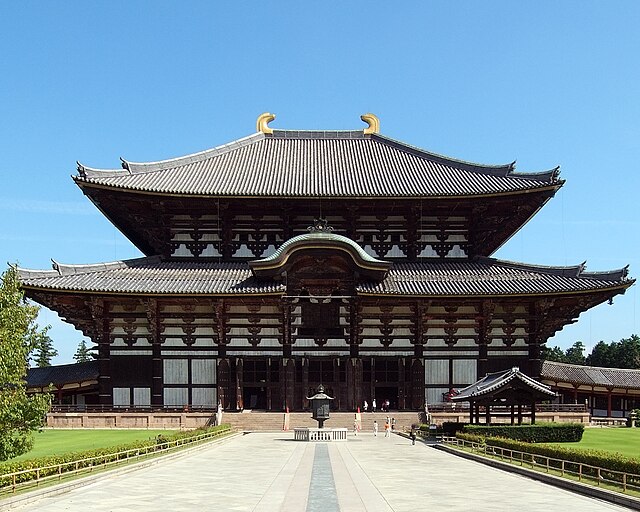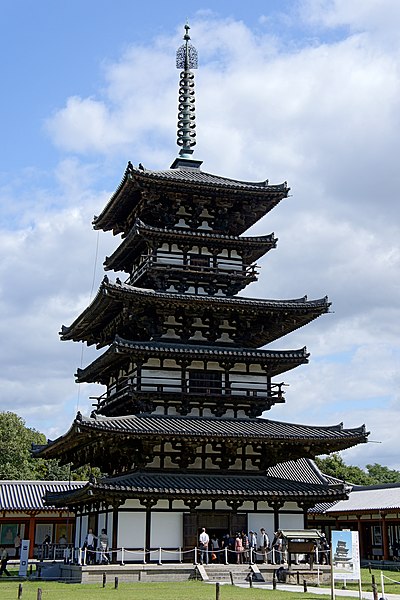Tōdai-ji is a Buddhist temple complex that was once one of the powerful Seven Great Temples, located in the city of Nara, Japan. Though it was originally founded in the year 738 CE, Tōdai-ji was not opened until the year 752 CE. The construction of the temple was an attempt to imitate Chinese temples from the much-admired Tang dynasty. The temple has undergone several reconstructions since then, with the most significant reconstruction taking place in 1709. Its Great Buddha Hall houses the world's largest bronze statue of the Buddha Vairocana, known in Japanese as Daibutsu (大仏). The temple also serves as the Japanese headquarters of the Kegon school of Buddhism. The temple is a listed UNESCO World Heritage Site as one of the "Historic Monuments of Ancient Nara", together with seven other sites including temples, shrines and places in the city of Nara.
Great Buddha Hall (daibutsuden), a National Treasure
A model of the garan of Tōdai-ji at the time of its foundation, seen from the north side, a part of 1/1000 scale model of Heijōkyō held by Nara City Hall.
Record of temple lands in Echizen Province in 757 (ICP); as head of the national network of Provincial Temples, Tōdai-ji's privileges included a large network of tax-exempt estates
A Model of the Kondo (Great Buddha Hall) at the time of foundation. The original hall was larger than the one built after it.
Nara is the capital city of Nara Prefecture, Japan. As of 2022, Nara has an estimated population of 367,353 according to World Population Review, making it the largest city in Nara Prefecture and sixth-largest in the Kansai region of Honshu. Nara is a core city located in the northern part of Nara Prefecture bordering the Kyoto Prefecture.
Image: Tōdai ji Kon dō
Image: Toshodaiji Nara Nara pref 01s 5s 4290
Image: Yakushiji Nara 11s 5bs 4200
Image: Sika deer in Nara 05







